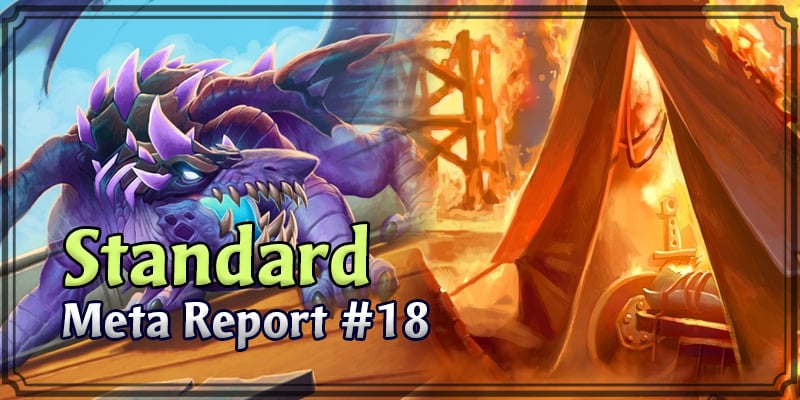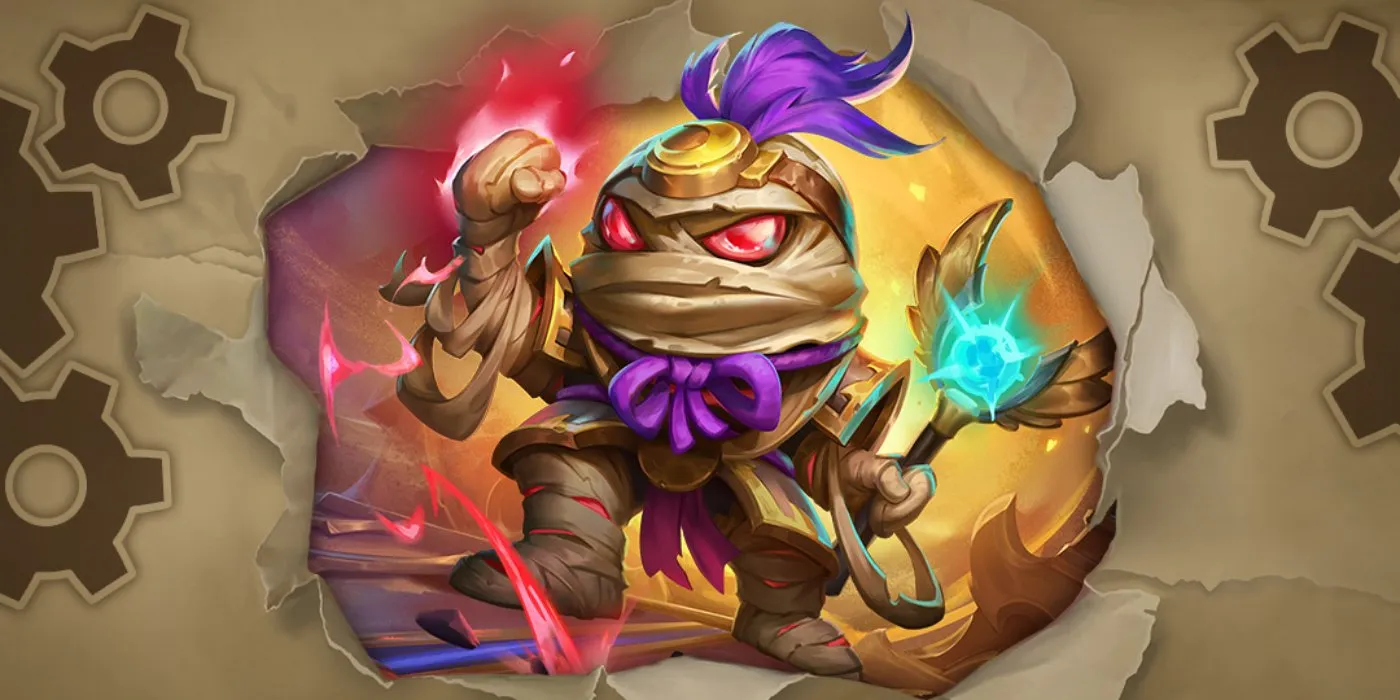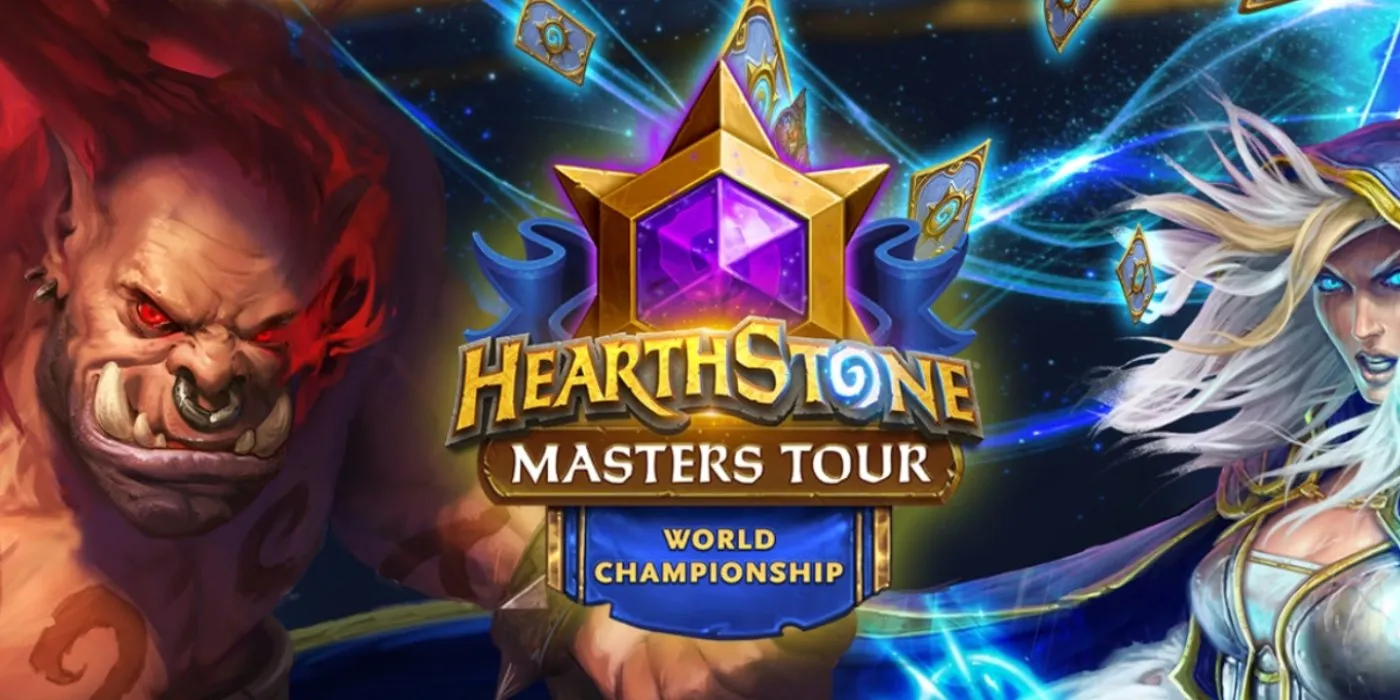Welcome to another edition of the Standard Meta Report, this time covering the week between January 5th and 12th, 2020, a week punctuated by another round of balance changes. As always the Report is based on an analysis of statistics from HSReplay, along with personal game experience at high ranks.
Editor’s Note
Descent of Dragons has been remarkably active. Just three weeks after the expansion’s first set of balance changes, yet another round of nerfs has shocked the meta, leading to dramatic changes in both playrate and winrate across the ladder.
The balance changes are too fresh for us to analyze the meta per se; for the time being, the Standard ladder remains wild and unpredictable. And since we’re still working with very small post-patch sample sizes, it would be irresponsible to draw firm conclusions on power level (though we can say with some confidence that the innovations in Warlock are the real deal).
Nor will you see every metadeck (or every class) accorded its proper place. Instead of a full Meta Report this week, think of today’s article as a snapshot of the meta in transition. These are the highlights from a period of rapid change and intriguing experimentation.
The Overview
No one has felt the balance changes more acutely than Thrall. Only three days after the latest patch, Galakrond Shaman’s popularity has plummeted at all ranks. Early numbers suggest the archetype’s power level has dropped dramatically; despite some fluctuation, most Galakrond Shaman lists have sunk to negative winrates in the wake of the patch.
Garrosh is also starting to feel the burn. Galakrond Warrior’s stranglehold on the upper meta is weakening, thanks to what should prove a consequential mana change to Scion of Ruin. And in the wake of a durability reduction for Ancharrr, Pirate Warrior has also taken a hit in playrate (though it wasn’t particularly popular to begin with).
With the most prominent Warrior archetypes weakened, Hunter has made a new push for relevance, both at Legend and lower ranks. In particular, the popularity of Secret Highlander Hunter is on the ascent. Face Hunter continues to decline, but should receive a needed boost from the weakening of Galakrond Warrior, one of its poorest matchups.
With the nerf to Necrium Apothecary, Rogue’s meta-defining archetypes are in free fall. Highlander Galakrond Rogue has seen a steep decrease in popularity, while Deathrattle Rogue has nearly disappeared. But Valeera has much to smile about. A pure Galakrond Rogue is undergoing furious refinement, and Malygos Rogue has made a soaring comeback.
Meanwhile, Gul’dan has entered an exciting period of refinement, as players catch onto a new variation of Handlock, along with an entirely new archetype in Control Galakrond Warlock. These are exciting days for Warlock, ones that have seen the class’ playrate skyrocket.
Quest Druid has experienced a dramatic increase in play across all ranks. There are already good signs the new meta may be far more favorable to this older archetype, including the growing interest in slower Warlock decks; Quest Druid excels against both Handlock and Control Galakrond Warlock. Once a blip on the radar, Token Druid is also making a new push for relevance; the archetype’s playrate has soared since the balance patch, rising to a representation of 4.19% between ranks five and Legend.
For Jaina, the balance changes have weakened four of her worst matchups: Galakrond Shaman, Galakrond Warrior, Pirate Warrior and Deathrattle Rogue (an archetype we expect to die out entirely). The recent surge in Quest Druid is even more good news. By all accounts, Highlander Mage should be chomping at the bit, but we haven’t yet observed substantial increases in the archetype’s playrate.
Descent of Dragons has been decidedly unkind to Uther, and the nerfs are unlikely to change things. While declines in both Galakrond Shaman and Galakrond Warrior are favorable for Mech Paladin, the archetype’s playrate isn’t sufficient to make an impact. We don’t see it getting any better.
Over the past two days, Quest Resurrect Priest has seen a bump in playrate, most pronounced at Legend, in response to a weakened Rogue and Shaman. Were the balance changes a god-send for Anduin? That remains to be seen, in part because Galakrond Warrior, a powerful matchup for Priest, is on the decline, leaving Anduin fewer matchups to dominate. At the same time, Malygos Rogue, the worst matchup of them all, looms large on the horizon.
Shaman
Legend players have nearly given up on Galakrond Shaman already; in a single day, the deck’s playrate at Legend sank from 17.81% to 2.87%. Things look much the same at lower ranks, where Galakrond Shaman now accounts for only 2.5% of the format. The nerfs to Invocation of Frost and [Hearthstone Card (Dragon’s Pack) Not Found] have been merciless.
But it would be premature to count this archetype out. Galakrond Shaman already survived one round of nerfs by embracing Spirit of the Frog and Zentimo. Galakrond, the Tempest remains an extraordinary tempo swing, supported by what may well be the most powerful Invoke ability in the game.
We don’t think you’ve seen the last of Shaman’s Galakrond.
Warrior
While Garrosh remains the most popular hero between ranks two and Legend, his playrate has decreased substantially in the wake of the balance patch. This trend can be observed across all three variants of Galakrond Warrior - control, tempo and Scion - but as expected, has hit the variant built around abusing Scion with Dragon Breeder and Barista Lynchen especially hard.
It remains to be seen whether the Scion build will stay competitive in the new meta; over the past two days, the deck’s winrate has dropped by an average of 3.5 percentage points.
Whether or not Warrior’s power level, in the aggregate, has decreased accordingly is still an open question. Tempo variants of the archetype continue to perform well, but winrates across the board remain volatile, swinging from soaring peaks to deep valleys on a daily basis.
In the coming days, we expect most players to transition fully to the archetype’s tempo variant, featured below. Though a slower meta may seem to favor the control variant’s gameplan, the tempo build of Galakrond Warrior is, without a doubt, a better deck. It’s better in every matchup, even the losing ones. The nerfs won’t change this fact one bit.
Pirate Warrior’s playrate has taken a plunge, but the archetype was already waning in popularity to begin with; the nerf to Ancharrr simply punctuates a protracted downward trend. As yet, there’s no clear pattern to predict the nerf’s effect on Pirate Warrior’s overall power level, but we expect the archetype to remain essentially unchanged.
Rogue
With a (much) slower Necrium Apothecary, Deathrattle Rogue is likely dead; the archetype’s power level seems to have cratered, with dramatic drops in both playrate and winrate. At Legend, the archetype has plummeted from a playrate of 5% to 0.28%.
Highlander Galakrond Rogue, on the other hand, isn’t dead; in time, the archetype will be able to adapt, either by substituting Deathrattle synergies for stronger tempo plays, or by accepting the fact that it’ll have to slow down. For now, the archetype’s playrate has dropped substantially across all ranks, but further refinement in the days to come should help.
But in many ways, Rogue players have already moved on. In response to the balance changes, many fans of Valeera have transitioned to a pure Galakrond list, Galakrond Rogue, which has seen dramatic increases in popularity over the past few days. Most variations on this theme opt for Umbral Skulker and Questing Adventurer, but Rogue expert J_Alexander has other designs, supplementing the traditional Invoke package with a Burgle package for immediate tempo.
Even more exciting? Malygos Rogue is back in a new guise, as Valeera makes use of her incomparable mana-cheating resources (namely, Heistbaron Togwaggle and Galakrond, the Nightmare) to discount the Legendary Aspect and deal massive amounts of face damage. Malygos Rogue has surged in popularity from ranks five to Legend, rising from a pre-nerf playrate of 1.22% to an astonishing 8%. We’re not sold on this archetype; as the deck’s playrate has increased, its winrate has dropped steadily (which could just be an artifact of lower-skilled players picking up the deck). But it’s a hell of a lot of fun, and we would never discourage you from dunking on a few Priests.
Druid
With the meta noticeably slower, Quest Druid has returned in greater numbers. As expected, the deck now features Ysera, Unleashed, an incredibly powerful late-game play capable (with sufficient draw from Breath of Dreams and our old friend Nourish) of building board after threatening board without mana expenditure.
Quest Druid has yet to crack a positive winrate between five and Legend, but we’re cautiously optimistic about the archetype. For one thing, several good matchups, including Control Galakrond Warlock and Malygos Rogue, are increasing in number. That’s good news for Druid, but even better is the decline in Rogue archetypes centered around Necrium Apothecary, a mechanic that absolutely murdered Malfurion.
Warlock
Warlock is undergoing a rapid and exciting period of experimentation
Last week, we featured a new variant of Handlock pioneered by Hearthstone Grandmaster Monsanto. Looking through the list, you’ll still see Handlock staples like Mountain Giant and Twilight Drake, but be assured, this isn’t your grandfather’s Handlock. This is a new beast with a far more aggressive gameplan. It’s also quite popular, having already superseded Galakrond Zoo Warlock in playrate between ranks five and Legend.
In the early game, you control the board through cheap tokens like Elven Archer and Lackeys, all of which pair excellently with Plague of Flames for high-tempo removal. Mountain Giant and Twilight Drake serve as key sources of chip damage through the mid-game, but the deck truly kicks into gear over the following turns, transitioning to a burn strategy with Leeroy Jenkins, Nether Breath and Soulfire.
In more recent days, the archetype has seen further innovation, most notably from another Grandmaster, Muzzy, who expanded the deck’s Lackey package by including EVIL Cable Rat and Dark Pharaoh Tekahn (in place of Swamp Dragon Egg and Zilliax).
Monsanto isn’t sold on the new all-in Lackey direction, arguing that Tekahn actually limits the deck’s internal synergies; the Lackeys are meant to remain disposable tokens. He’s still playing his own variant, but preliminary numbers suggest that Muzzy’s version of the archetype may well be more powerful. It also happens to be slightly more popular at the moment. A third variation on the deck, which swaps out Elven Archer for Abyssal Summoner, is also making the rounds, but Abyssal Summoner is the worst card in the list; Elven Archer performs better, again because it supports the archetype’s internal synergies.
A new variant of Handlock would be enough, but that’s not all Gul’dan has been up to. Thanks to NoHandsGamer, we have a new archetype in Control Galakrond Warlock, which combines a full Invoke package with many of Warlock’s premier control tools, including [Hearthstone Card (Lord Godfrey[Hearthstone Card (, Dark Skies and Crazed Netherwing.
Thus far, the archetype has performed exceptionally; the most popular list has already earned a winrate of 57.5% over 17,000 games between five and Legend. The inclusion of Sacrificial Pact is particularly ingenious; the card provide a burst of free healing from one of your many Demon tokens, while also assisting in hand size management.
With sweeping nerfs to Rogue, Shaman and Warrior, the meta once again feels diverse and unpredictable. Valeera is adapting well, but Thrall has found himself in the dumpster. Warlock is on the rise, as Secret Highlander Hunter and Quest Druid stage improbable comebacks. Do you feel the nerfs were good for the meta? Happy to see Galakrond Shaman humbled? What have you been playing since the balance patch? Let us know in the comments?
) Not Found]) Not Found]



Comments
Has anyone else felt the bite of Embiggen Druid? Since the nerfs, I cannot count the number of times I've encountered this deck in Standard and Wild alike.
I'm liking the Dragon Handlock list, which plays very akin to the Handlock of old (I don't know how to use the deck command so I can't show it).
One thing I want to note, I am loving the way they are handling this new expansion. Smaller nerfs but more frequently, and across the board as opposed to against one deck. All that alongside getting 35 new cards - this is going to be a volatile meta. I was worried about how Blizzard had been handling the game ever since Year of the Raven, but Blizzard have really shown that they're taking a different route this time.
That said, I hope this sets an example for expansions to come. I'd rather have a storyline across the 3 expansions instead of 3 random detached ones, and I like the concept of splitting the classes up into groups. I hope they keep the nerf style for the upcoming expansions as well since that allows Blizzard to print more powerful cards (Galakrond Shaman is an exception. Dragon's Pack and Corrupt Elementalist are just insane), without the worry of interesting mechanics sinking to the bottom of the meta. The League of Evil have had their fun, and now it's the League of Explorer's turn to enjoy the limelight.
Just click "Copy BBCode" when on the deck page and paste what you get. Another way is to click the "Deck" button in these comment editors and look up the deck ID (= the number at the end of deck page URL) and write it there.
I'd imagine the decklist you're speaking of is the one below:
Been playing embeggen token druid in wild, standard doesn't have enough good low cost cards to buff, token druid in standard is too spell heavy, and there is a lack of card draw and buffable minions (like eggs or echoing oozes) just make embeggen in standard overshadowed..
But it wild it hasn't been discovered how strong it is yet.
In my experience the deck has been rather inconsistent. Embiggen only hits minions in your deck, so you have to rely heavily on draw. What list are you using and on what ranks?
I've been running a variation of Hunter that is entirely centered around bugs to surprising success. Infested Goblin + 9 Lives keeps the board full of Taunt and Knife Thrower + Swarm is a great AOE combo that can be supplemented by Revenge of the Wild for a good amount of burst damage. Toxic Reinforcements + Knife Thrower extends the lethal range. I prioritize Rush minions, keeping the Griffins handy and of course Desert Spear. Key points about this deck is it has a quick reaction to threats, and the amount of 1/1 attackers keep from needlessly overkilling opposing minions, lending to the efficiency of damage points. Matches up poorly to Pirate Warrior, but the quick reaction and ability to quickly fill a board means I can react to my opponent in a "wait and see, then rush" strategy.
I'm playing Quest Malygos druid instead of simple quest druid (though I run only 2 new cards both of which are Treenforcements because I don't want to clog my hand with Worthy Expedition)